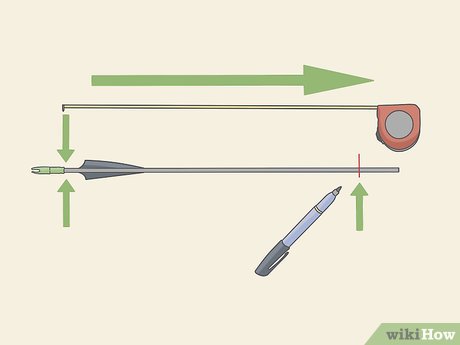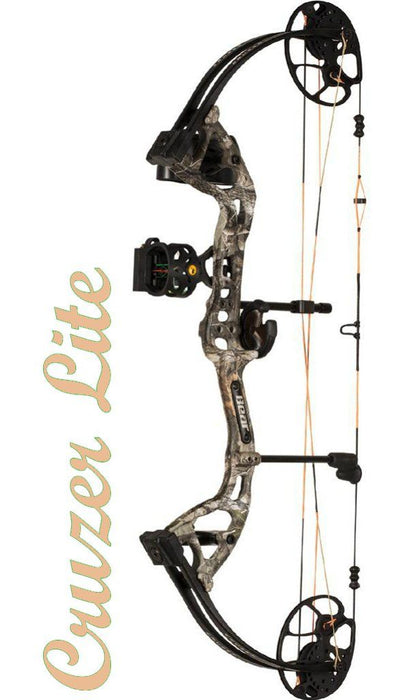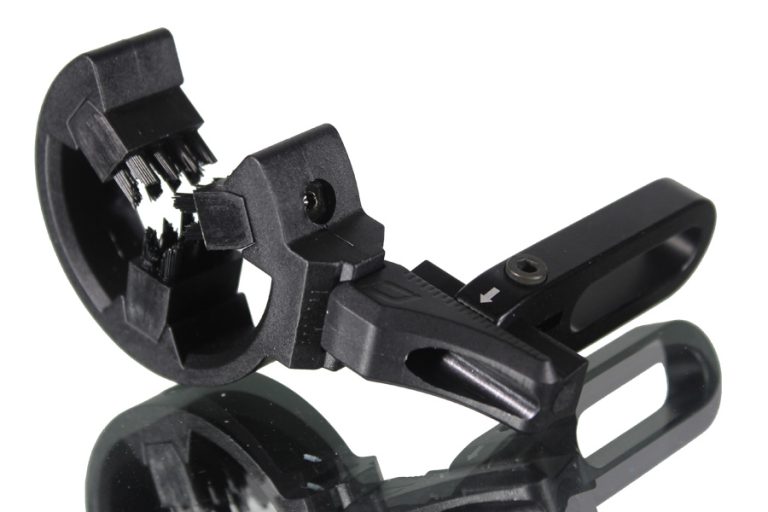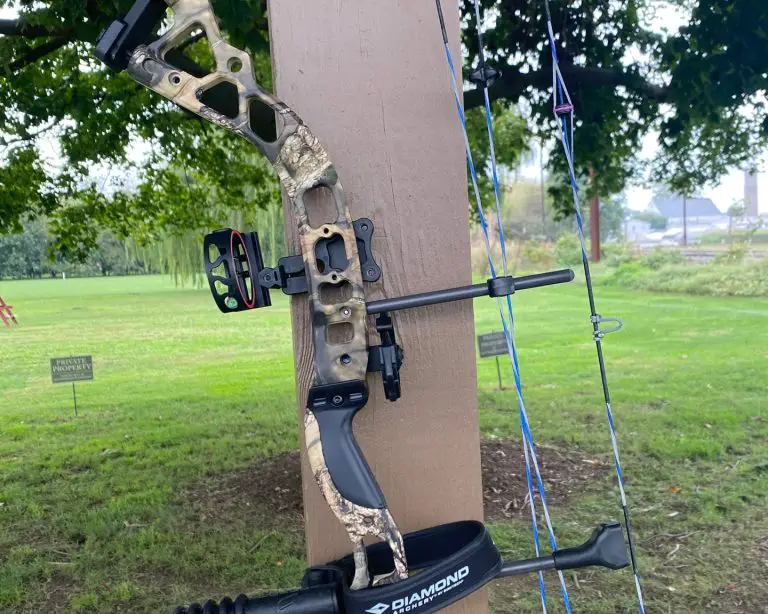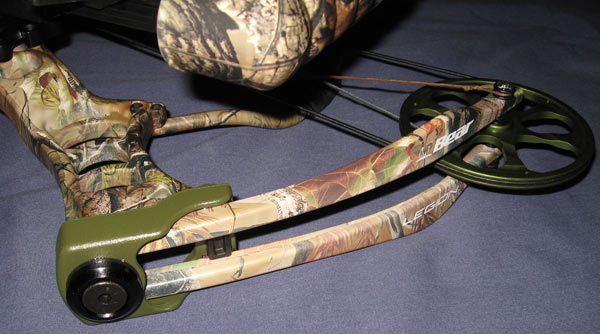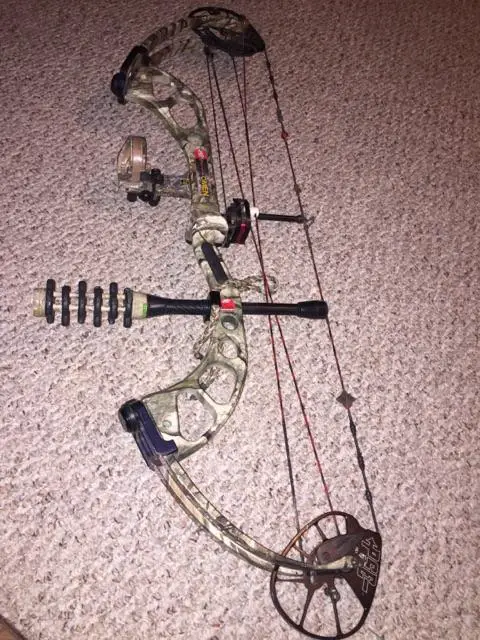How To Cut Carbon Arrows
In the world of archery, the compound bow stands out as a fusion of innovation and tradition. With a system of cables, pulleys, and cams, compound bows provide a unique advantage to archers by allowing them to hold a high poundage at full draw with a reduced holding weight. This guide explores the mechanics and components of compound bows, highlighting their power, accuracy, and adjustability. It also provides tips for choosing the right compound bow, maintaining and caring for it, and emphasizes the importance of safety. Whether you’re a seasoned archer or just starting out, the compound bow offers a thrilling experience that combines the best of both worlds.
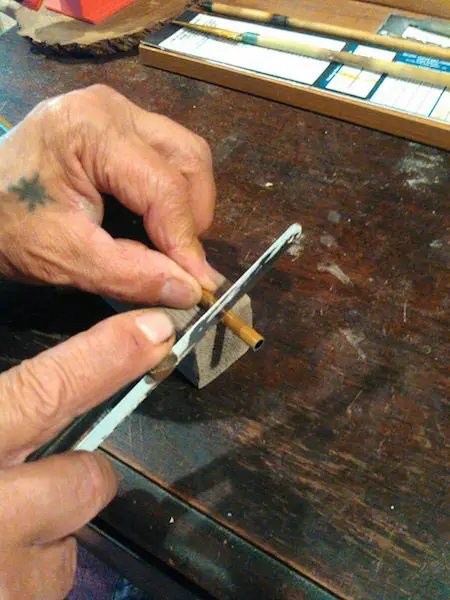
Key Components
When it comes to carbon arrows, there are a few key components that you need to be familiar with. These components play a crucial role in the performance and durability of your arrows. Understanding them will help you make informed decisions when selecting and working with carbon arrows.
The first important component is the arrow shaft itself. Carbon arrows are made from a combination of carbon fibers, which give them their strength and durability. The quality and construction of the carbon shaft can vary, so it’s important to choose arrows that are suited to your needs and preferences.
Another key component is the arrow nock. This is the plastic piece at the back end of the arrow that attaches to the bowstring. The nock plays a vital role in ensuring proper arrow flight, so it’s important to select nocks that are compatible with your bow and arrows.
Lastly, the arrow point or tip is also an important component. The point determines the weight and type of arrow you’ll be using. There are different types of points available, including field points for target shooting and broadheads for hunting. It’s important to choose the right arrow point for your intended use.
Advantages of Carbon Arrows
Carbon arrows offer numerous advantages over other types of arrows, making them a popular choice among archers of all skill levels. Here are some of the key advantages of carbon arrows:
-
Strength and Durability: Carbon arrows are known for their incredible strength and durability. This makes them less prone to bending or breaking, even when used in demanding situations such as hunting or target shooting.
-
Lightweight: Carbon arrows are lighter in weight compared to arrows made from other materials, such as aluminum or wood. This lightweight design allows for faster arrow speeds and flatter trajectory, resulting in greater accuracy and improved shooting performance.
-
Consistency: Carbon arrows are known for their consistency in terms of weight, spine, and straightness. This consistency translates to more predictable and reliable arrow flight, which is essential for accurate and repeatable shooting.
-
Versatility: Carbon arrows are versatile and can be used for various purposes, including target shooting, hunting, and competitive archery. They can be customized to suit individual preferences, such as different arrow points and fletchings.
-
Weather Resistant: Carbon arrows are highly resistant to the effects of weather, such as moisture and temperature changes. This makes them ideal for outdoor use, as they won’t warp or lose their shape when exposed to different environmental conditions.

Choosing the Right Carbon Arrows
Choosing the right carbon arrows can greatly impact your shooting performance and overall experience. Here are some factors to consider when selecting carbon arrows:
-
Arrow Length: The length of your arrows should be appropriate for your draw length and the type of bow you are using. To determine the correct arrow length, consult a sizing chart or seek advice from experienced archers or professionals.
-
Arrow Spine: The spine of the arrow refers to its stiffness. It’s important to choose arrows with the correct spine for your bow’s draw weight and your shooting style. Arrows with incorrect spine can result in erratic arrow flight and decreased accuracy.
-
Arrow Weight: The weight of the arrow can also affect its performance. Heavier arrows may offer better penetration and are often preferred for hunting. Lighter arrows, on the other hand, tend to have flatter trajectories and are popular for target shooting.
-
Fletching: Fletching refers to the feathers or vanes attached to the back end of the arrow. It helps stabilize the arrow during flight and can influence its trajectory. Consider factors such as fletching size, shape, and material when choosing carbon arrows.
-
Budget: Carbon arrows come in a range of prices, so it’s important to consider your budget. While high-end arrows may offer advanced features and superior performance, there are also affordable options that provide satisfactory results for beginners and casual archers.
By carefully considering these factors, you can choose carbon arrows that are best suited to your needs and preferences, ultimately enhancing your shooting experience.
Tools Needed
Before you begin the process of cutting carbon arrows, there are a few tools that you’ll need to have on hand. These tools will ensure that you can make precise and accurate cuts, resulting in properly sized arrows.
-
Arrow Saw: An arrow saw is a specialized tool designed specifically for cutting arrows. It features a high-speed cutting blade that allows for clean and precise cuts. Arrow saws are available in various models and price ranges, so choose one that suits your needs and budget.
-
Arrow Shaft Cutter: This tool is used to hold the arrow shaft securely in place while you make the cut. It helps ensure that the cut is straight and accurate. Look for a cutter that is compatible with your arrow diameter and is easy to use.
-
Measuring Tape or Ruler: You’ll need a measuring tool to determine the desired length for your carbon arrows. A measuring tape or ruler with clear markings in inches or centimeters will suffice.
-
Marker or Pencil: A marker or pencil can be used to mark the cutting point on the arrow shaft. This will help guide your cuts and ensure consistency across all your arrows.
-
Safety Equipment: It’s always important to prioritize safety when working with cutting tools. Wear safety glasses to protect your eyes from any flying debris, and consider using gloves to protect your hands.
By having these tools on hand, you’ll be well-equipped to cut your carbon arrows with precision and ease.

Measuring and Marking
Before you can start cutting your carbon arrows, it’s essential to measure and mark the desired length accurately. Follow these steps to ensure precise and consistent cuts:
-
Determine the desired arrow length based on factors such as your draw length, bow type, and personal preference. Use a measuring tape or ruler to measure the distance from the nock groove to the desired cutting point.
-
Place the arrow shaft on a stable surface, ensuring that it is secure and won’t roll or move during the marking process. Use a marker or pencil to make a clear and visible mark on the shaft at the desired cutting point.
-
Repeat the measuring and marking process for all your arrows, double-checking the measurements to ensure accuracy. Consistency is key, as it will help maintain uniformity in arrow length.
By taking the time to measure and mark your carbon arrows correctly, you’ll set yourself up for success when it comes to making the cuts.
Cutting Process
Once you have measured and marked your carbon arrows, it’s time to begin the cutting process. Follow these steps to ensure clean and accurate cuts:
-
Prepare your arrow saw by securely tightening the arrow shaft cutter to hold the arrow in place. Ensure that the arrow is aligned with the cutting blade and that it won’t move during the cutting process.
-
Put on your safety glasses and gloves to protect yourself from any potential hazards. Safety should always be a top priority when working with cutting tools.
-
Carefully position the marked cutting point of the arrow shaft against the cutting blade of the arrow saw. Apply gentle pressure to ensure proper contact between the blade and the shaft.
-
Turn on the arrow saw and make a clean and steady cut through the arrow shaft, following the marked cutting point. Be sure to maintain an even pressure and a smooth motion to prevent any jagged edges or irregular cuts.
-
Once the cut is complete, inspect the end of the arrow shaft to ensure a clean and even cut. Remove any burrs or rough edges using a file or sandpaper if necessary.
-
Repeat the cutting process for all your marked carbon arrows, taking care to make consistent and accurate cuts. Double-check each arrow after cutting to ensure that it matches the desired length.
By following these steps carefully, you’ll be able to cut your carbon arrows with precision and achieve the desired length for optimal performance.
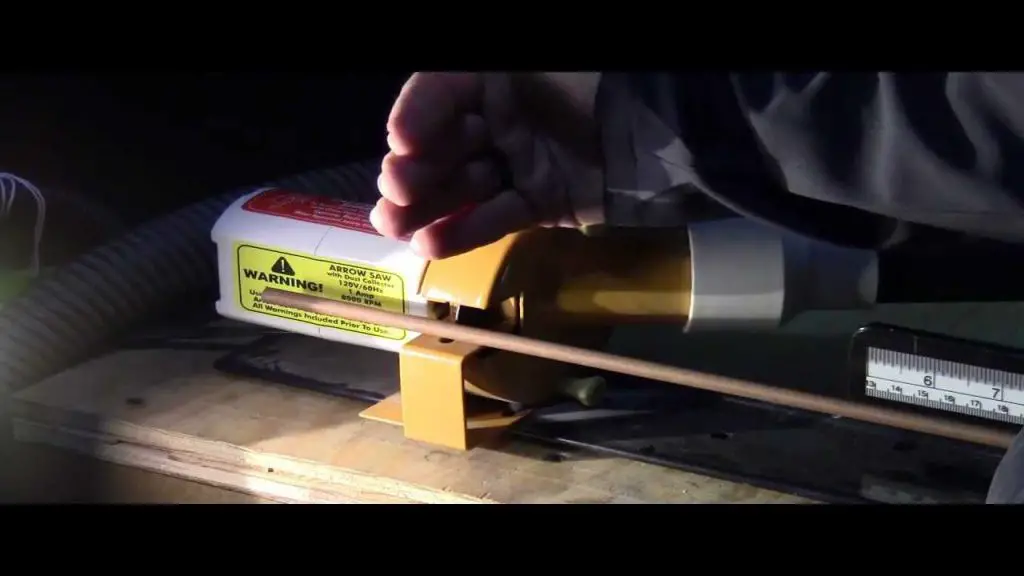
Fletching
Fletching refers to the feathers or vanes attached to the back end of the arrow. These components play a crucial role in stabilizing the arrow during flight and improving its accuracy. Here are a few key points to consider when fletching your carbon arrows:
-
Fletching Type: There are various types of fletching available, including traditional feather fletching and modern synthetic vanes. Each type has its own advantages and considerations, so choose one that suits your shooting style and preferences.
-
Fletching Size: The size of the fletching can impact arrow flight and stability. Larger fletchings generally provide more drag, resulting in a slower but more stable arrow. Smaller fletchings offer less drag and can be suitable for faster arrow speeds.
-
Fletching Orientation: The orientation of the fletching can also affect arrow flight. Most archers prefer a three-fletch configuration, where the fletchings are evenly spaced around the arrow shaft. Experiment with different orientations to find what works best for you.
-
Fletching Adhesive: Use a high-quality fletching adhesive to attach the fletchings securely to the arrow shaft. Make sure to apply the adhesive evenly and avoid any excess that may interfere with arrow flight.
-
Fletching Alignment: Take care when attaching the fletchings to ensure they are aligned properly. Misaligned fletchings can cause the arrow to veer off course and impact accuracy.
By considering these factors and following best practices when fletching your carbon arrows, you can enhance their stability and overall performance.
Insert Installation
Inserts are small metal or plastic components that are inserted into the front end of the arrow shaft. They serve several purposes, including adding weight to the arrow, protecting the shaft, and providing a base for attaching broadheads or other arrow points. Here’s a step-by-step guide on how to install inserts in your carbon arrows:
-
Select the appropriate inserts for your carbon arrows based on the type of broadheads or arrow points you’ll be using. Inserts come in various sizes and weights, so choose those that are compatible with your shaft diameter and meet your weight requirements.
-
Clean the inside of the arrow shaft using a cotton swab or a rag to remove any dirt, debris, or excess glue.
-
Apply a small amount of specialized insert adhesive to the threaded end of the insert. Be sure to use an adhesive that is designed specifically for insert installation to ensure a secure and durable bond.
-
Insert the adhesive-coated end of the insert into the tip of the arrow shaft. Apply gentle pressure and rotate the insert to ensure even distribution of the adhesive inside the shaft.
-
Allow the adhesive to dry completely according to the manufacturer’s instructions. This may take a few hours or overnight, so be patient and avoid handling the arrows during this time.
-
After the adhesive has fully cured, test the insert’s stability by gently pulling on it. If it feels secure and doesn’t move, you can proceed with the next steps of arrow setup.
By following these steps, you can properly install inserts in your carbon arrows, ensuring a secure connection and optimal performance.
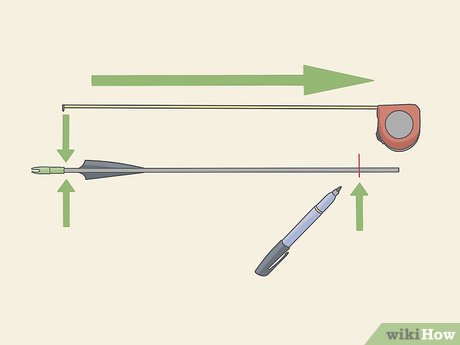
Arrow Spine and Weight
The spine of an arrow refers to its stiffness, and it plays a vital role in arrow flight and accuracy. Choosing the correct arrow spine and weight is crucial for optimal performance. Here’s what you need to know:
-
Arrow Spine: The spine of an arrow is determined by its flexibility, which affects how the arrow reacts when released by the bowstring. A stiffer spine is best suited for higher draw weights, while a more flexible spine is appropriate for lower draw weights. The correct spine ensures that the arrow flexes and returns to its original shape in a controlled manner.
-
Spine Selection: The spine selection process involves matching the arrow spine to your specific draw weight and draw length. Many arrow manufacturers provide spine charts or online resources to help determine the appropriate spine for your setup. It’s important to follow these guidelines to achieve the best arrow flight.
-
Arrow Weight: The weight of the arrow is another important factor to consider. Heavier arrows tend to have greater momentum and penetration, making them suitable for hunting or when shooting at longer distances. Lighter arrows, on the other hand, offer flatter trajectories and faster speeds, which can be advantageous for target shooting or when shooting at shorter distances.
-
Balancing Arrow Components: To achieve optimal performance, it’s important to balance the components of your carbon arrows. This includes considering the weight of the shaft, insert, fletching, and other components such as nocks. By adjusting these elements, you can fine-tune the overall weight and spine of your arrows.
It’s crucial to take the time to understand the concept of arrow spine and weight and select components that are appropriate for your specific setup. This will help maximize the performance and accuracy of your carbon arrows.
Testing and Adjusting
Once you have cut, fletched, installed inserts, and considered the spine and weight of your carbon arrows, it’s essential to test and adjust them to ensure optimal performance. Here are a few steps you can take to fine-tune your arrows:
-
Paper Tuning: Paper tuning is a method that allows you to assess arrow flight and make adjustments if necessary. Set up a large sheet of paper in front of your target and shoot your arrows through it. Analyze the tear patterns on the paper to determine if your arrows are flying straight. If adjustments are needed, consult resources or seek guidance from experienced archers.
-
Broadhead Testing: If you plan on using broadheads for hunting, it’s crucial to test their flight and accuracy. Broadheads can sometimes fly differently compared to field points due to variations in weight or design. Take the time to shoot your broadhead-tipped arrows and make adjustments to ensure they are flying true.
-
Fine-Tuning Components: If you notice inconsistencies or issues with arrow flight, consider fine-tuning various components. This may involve adjustments to the fletching, insert weight, or even switching to different arrow points or nocks. Experimentation and testing are key to finding the optimal setup for your specific needs and shooting style.
Regular testing and adjustments are necessary to maintain the performance and accuracy of your carbon arrows. By being attentive to arrow flight and making necessary tweaks, you can ensure consistent and reliable results.
In conclusion, working with carbon arrows requires careful consideration of various components and processes. From choosing the right arrows to cutting, fletching, installing inserts, and testing, each step contributes to the overall performance and accuracy of your arrows. By following the guidelines outlined in this article and seeking additional resources and advice, you can enhance your archery experience and make the most of your carbon arrows. Happy shooting!

